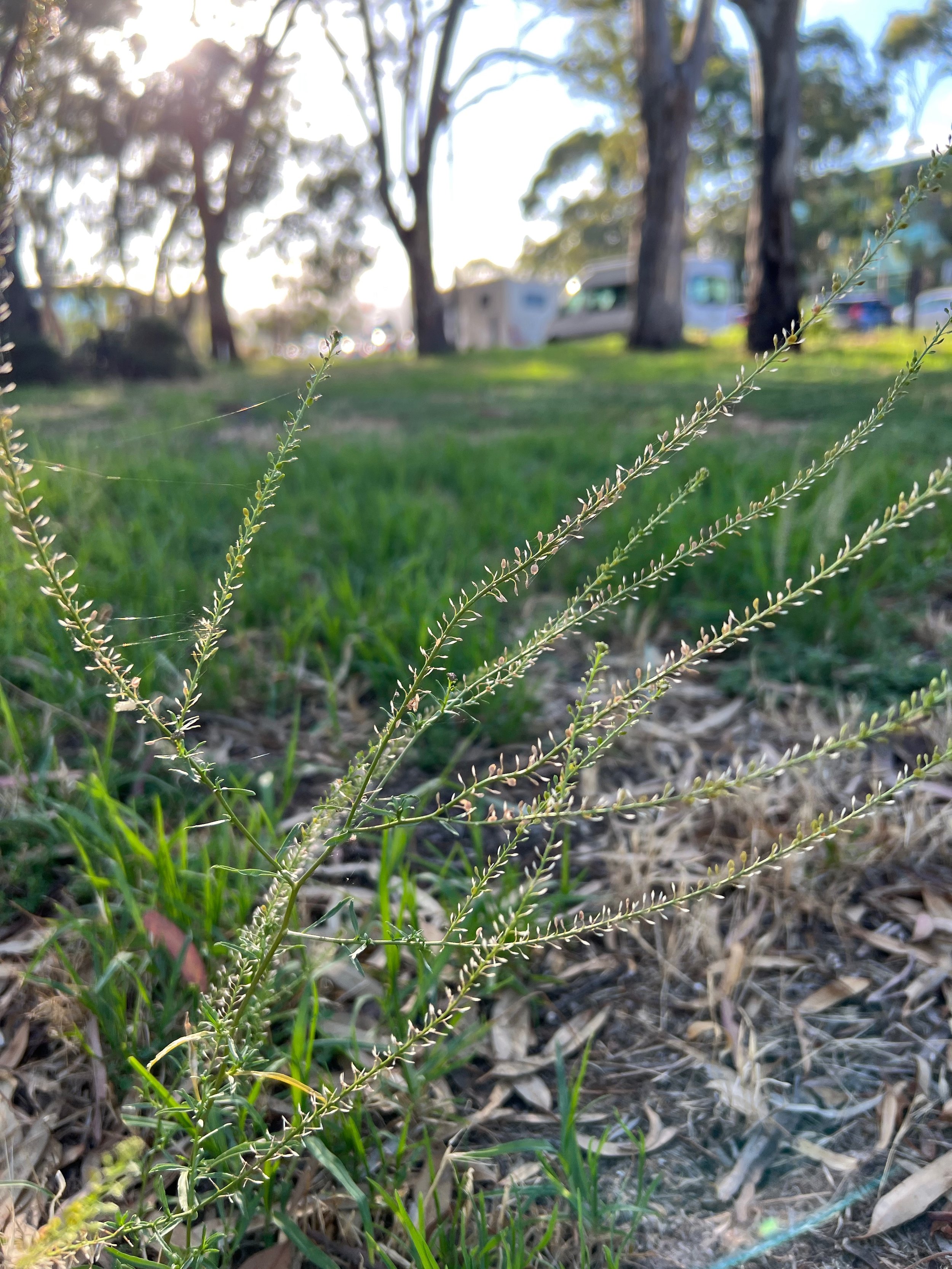by Carla Caruso
There’s an aphorism that a weed is simply a plant growing in a place where humans don’t want it.
Even so, they’re still the bane of those overseeing gardens, both home gardens and public Parks. Managing weeds is a constant battle.
We spoke to Matt Jorgensen (pictured), the City of Adelaide’s Horticulture Team Leader, about the council’s strategy for tackling weeds and invasive species. He says it’s a balancing act.
“Each case is treated on an individual basis. However, broadly speaking, we have dedicated programs to manage ‘Weeds of National Significance’ and ‘Declared Plants of South Australia’ in the Park Lands and streets.
“All other weeds are managed based on their invasiveness, location, and how they affect the desired plants we are growing in each area.”
The most common invasive species in Your Park Lands, according to Jorgensen, are “soursob, galenia, caltrop, Cape tulip, ryegrass, barley grass, and wild oats”.
Phragmites australis, known as the common reed, can look like weeds but they’re natives. Find them in Helen Mayo Park (Park 27).
Although, he says: “To the best of our knowledge, there has been no significant expansion in [their] range in recent years.”
The City of Adelaide has a team of 88 horticulturists who manage and maintain 776ha of Park Lands, including open space, woodland, bushland and garden beds.
Jorgensen says: “Weed seeds and vegetative material can enter the Park Lands through a number of ways, including wind, water, birds, vehicles, bikes, and pedestrians.
This flowering plant - Senecio quadridentatus - is a native not a weed in Victoria Park / Pakapakanthi (Park 16). It illustrates how hard it is to differentiate between the species.
“Given the vast size and ease in which weeds can spread, it’s almost impossible to completely eradicate invasive species.
“In saying that, recently we have been successful in reducing the prevalence of Chilean needle grass, Cape tulip, madeira vine, olive seedlings, ash trees, and giant reeds.”
And if members of the public spot a weed? APA, for example, was recently contacted by a concerned parkgoer about the spread of capeweed.
Lactuca serriola, a weed also known as milk thistle, sprouting in Mistletoe Park / Tainmuntilla (Park 11).
Jorgensen says: “The best thing people can do is report any declared weeds, whether Weeds of National Significance or Declared Plants of South Australia. However, keep in mind that the majority of these occurrences are already being managed.”
He discourages people from using their own devices to eradicate species when they spot them. “In many instances, it can be difficult to distinguish between weeds and native plants. So, we do not encourage members of the public to pull out weeds.
“It is worth noting [also that] certain plants can still regrow or drop seeds if pulled out and left on-site. So, if people do attempt to pull out weeds, please take them with you and dispose of them.”
Lepidium - a weed - on display in Victoria Park / Pakapakanthi (Park 16).








